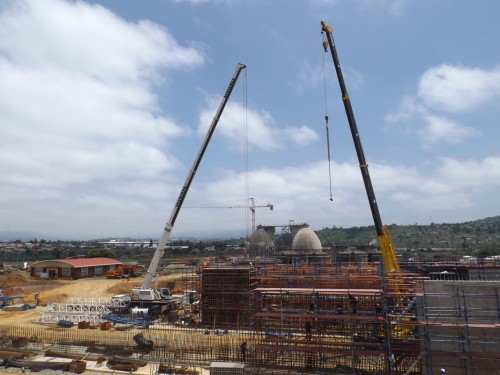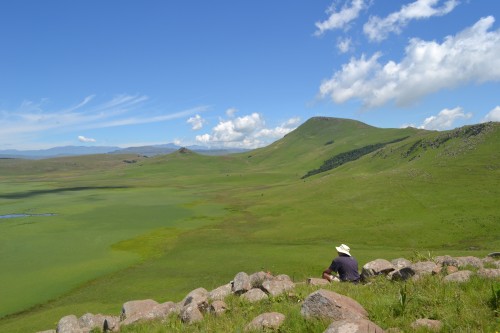
is essential to achieving effective water resource management. Pic: Steve Terry.
In the first of this series of two articles I presented a rather depressing picture of the Msunduzi River that runs through my home town, Pietermaritzburg. It is now as polluted as it was over a century ago, before the first formal sewer system was installed. To quote Dave Still, the Chairman of the Dusi-uMngeni Conservation Trust (DUCT), in an email he circulated on 7 January 2015 “…nothing concerns us more than the serious levels of faecal pollution in the Dusi, and the fact that this situation has deteriorated so much over the years.”
But what I described and what concerns Dave is simply a symptom of underlying problems. So what are these and what might we – individuals, government, civil society, business – do about them? At a fundamental level the causes are rooted in governance and business failures. Water resource management should involve good governance and business practice. But what does this mean in practical terms?
Recognising value: We need to appreciate that water – raw water, processed water, stormwater and wastewater – has value and if we invest in its management we will achieve significant return on our investment. We actually need to get away from the word ‘waste’ as it implies something of no value; something that is perceived as a cost rather than a benefit.
Culture of care: If we care about water, its procurement, production, distribution and reprocessing and about the people that manage these functions we will achieve good returns. While we pollute our own water supplies, leave taps to run 24/7, don’t maintain infrastructure, and allow our staff to become demotivated we will certainly fail.

resource management. Pic: Duncan Hay
Invest in source of our raw material: Like any business operation the better the quality of the inputs the better the quality of the product or service. We will get our best return by investing in the source of raw material; our green infrastructure – maintain, restore and rehabilitate our grasslands, riparian areas, wetlands and indigenous forests – so that they can continue to do what they do well at low cost: purify our water. It’s also about the farmer, the domestic user and the industrialist preventing nutrients and contaminants entering the aquatic system rather than trying to manage them once they are in the system.
Integrating functions: Currently we tend to handle water supply management, waste water management and stormwater management as three separate operations. In some instances, at a single place, they might be handled by four different organisations; Water Affairs and Umgeni Water handling supply, the district municipality handling waste and the local municipality handling stormwater. A fragmented and disintegrated approach is inevitable. We need to move to a situation where water resource management is a single integrated function – one business operation optimising all its linkages and, with that, its profit.
Moving from risk to reward: A risk-based approach to water resource management is usually good but what it does, particularly if the approach is risk-averse, is to limit opportunities and, with that, potential reward. So, as an example, if we reduced the surety of water supply to eThekwini from 95% to 85% and thereby increase the risk, we might stimulate an entire economic sector focused on rainwater harvesting and so increase the reward. If this happens we might not need to build Smithfield Dam!
Pricing and revenue collection: Here we have a system that makes money out of supplying water and the disposal of waste water and yet we, the customers, are told to use less water. Can you imagine a big advertising board flashing drink less Coke or don’t buy a Toyota! And we are being told to use less of something that is completely under-priced – there is something very wrong with this marketing and pricing model. This might be unpopular but the price of water and its disposal needs to increase dramatically for those who can afford it. As has happened with electricity this will provide an incentive to save. But, that incentive will only be followed through if what is owed is collected. We have to sort out the debtors’ book so as to sort out cash-flow and establish reserves to invest in production and growth.
Accountability: In a business it is quite simple. If you screw up badly you are made an example of and you are fired fast. The water business should be no difference. In the UK if a sewer line breaks and is not repaired in four hours the hefty fines start to mount and heads start to roll. If we have this level of accountability things will move forward quite quickly.
Self-regulate: Government cannot regulate everything and it shouldn’t. Just as many business sectors and industrial activities regulate themselves and each other through norms, standards and codes of conduct, so should we as water users be regulating our own behaviour. We do this in our own interest and for the common good.
People: Finally, it’s actually not about water, it’s about people. As most business leaders discover competitive advantage starts and ends with the staff in the company. They are your main asset (and can be your main liability) and are what give your product or service its quality. For the water resource business to operate successfully your staff need the required competence, experience, enthusiasm and incentives to make it work.
